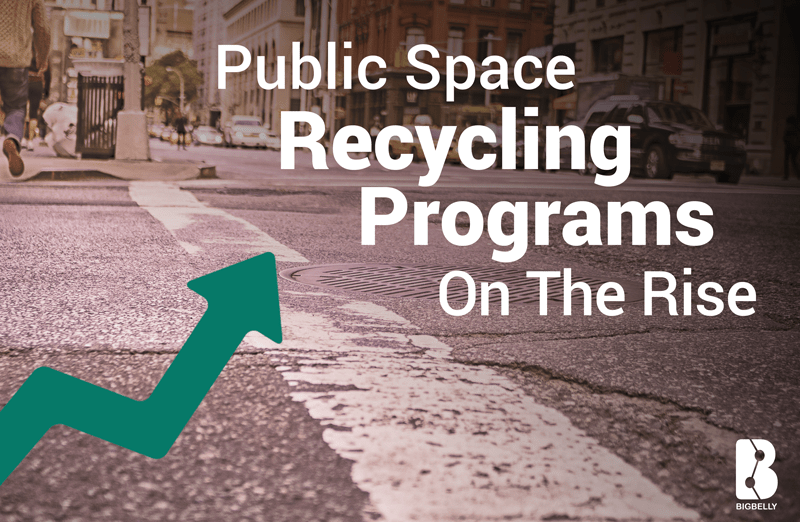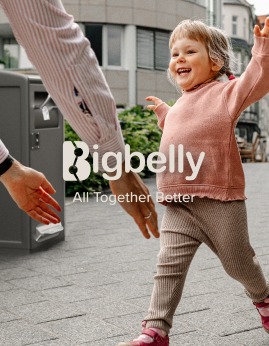
What are public spaces? They are indoor/outdoor attraction centers, and highly visible commerce areas that have unique features that add to city livability. They are diverse and can be found in downtown areas, on the outskirts, or as a feature of a specific neighborhood. Wherever they are, they attract the public. When linked to city infrastructure, public spaces are promoted by tourism departments as valuable enhancements to the town: from transit hubs, airports, and recreation centers to parks, playgrounds, and sidewalks.
Livability Drives Public Space Recycling
Recycling programs aimed at public spaces improve livability, which is the sum of all the factors that contribute to a community’s quality of life. There are numerous rankings of “most livable cities” with some of the most renowned published by the Economist, Forbes, and Monocle. Cities are serious about how their community is recognized and their livability rankings. These factors are widely publicized across many media outlets. Cities vie for these coveted titles as they can stimulate economic growth, improve property values, and enhance tourism.
While households have participated in home-based recycling for more than 30 years with curbside recycling, a focus on livability fuels a movement to expand recycling beyond homes and into public spaces. In some cities and towns, public space recycling has only recently emerged as common practice. Until then, few large-scale public space recycling programs existed and those that did offered little information about program costs and effectiveness. Over the past 15 years, communities have started to implement programs as an expansion of existing recycling efforts to communicates their culture and commitment to sustainability.
Community Support & Collaboration: Keys to Public Space Recycling Program Success
Developing a successful public space recycling program requires collaboration with stakeholders, involvement with the community, creation of a recycling collection infrastructure, and articulation of the environmental benefits. These programs communicate that landfill waste is preventable. Municipalities can design a multitude of initiatives that prevent needless waste – recycling, composting, producer responsibility, etc. In addition to reducing waste, many of these initiatives also provide jobs and reduce waste management-related costs to cities and towns.
When developing a public space recycling program, groups must know the environment in which the program will operate. With broad adoption, cities can establish public space recycling as an important step toward improving overall recycling and build strategies that will help reduce waste. With successful recycling programs occurring in municipalities of all sizes, models for economically sound recycling and waste reduction programs are on the rise.
Once home-based recycling is cemented in a community, it’s common for citizens to demand the same opportunity in public spaces. Cities can use this enthusiasm to highlight their commitment to the environment and a tradition of recycling among residents, visitors, and businesses. Community-based meetings and forums can help when establishing recycling programs and setting policy direction for future sustainable solutions. Before jumping into developing a public space recycling program, municipalities must first learn about how to make public space recycling successful, cost-effective, environmentally beneficial, and consistent with the town’s values. Armed with such knowledge, teams can better understand what it will take to implement a successful program – one in which recyclables are continually and properly disposed of and not just trashed. This forms the foundation for pilot programs that test hypotheses.
A Growing Need & Environmental Impact
Public space recycling provides the opportunity to dispose of recyclable materials on the go and to create awareness that waste is generated away from home. Busy lifestyles and out of home consumption are the primary reasons why resources are thrown away rather than recycled. In cities with established recycling programs, it’s easy to recycle at home but it is often difficult to find recycling bins in public spaces, which forces people to toss recyclables in the trash.
What happens to that trash? It’s often incinerated or buried in a landfill, which contributes to global warming, releases toxic substances, and pollutes air and water. Recycling is an effective way to reduce greenhouse gases and the need to extract new resources by using recycled materials, which in turn reduces the energy it takes to process and manufacture new goods. Recycling reduces many industrial processes needed to convert raw materials into finished products and packaging.
Recycling Opportunities
By creating opportunities to recycle in public spaces, municipalities can capture more materials for recycling, create and support a culture of recycling, and demonstrate the value of recycling materials. It’s an effort that elevates recycling above wasting.
Opportunities for additional waste reduction through public space event recycling and composting exist with programs in place. Although public space recycling typically cannot accommodate the large amount of recycling generated by some public events, it serves as the foundation to reduce waste and improve waste management services.
Public space recycling is a public amenity that positively impacts a community’s quality of life. Forward-looking leaders seek ways to enrich city living and work to develop strategies that maximize amenities and implement plans that make the entire system more efficient and the experience more fulfilling. They look at several categories that are directly improved by public space recycling – natural environment, political and social environment, public services, recreation, and the socio-cultural environment.
Introducing Public Space Recycling Programs
Are you a public official or member of a citizen group working on implementing a public space recycling program? You know that the community wants recycling available in public spaces, you know you need receptacles, but do you know what else is involved?
- Where to start?
- What challenges to expect?
- How to identify staff support?
- How to build community support and awareness?
- How to choose containers?
- How to provide education?
- How best to measure success?
When developing programs, municipalities need to consider the successes and challenges with their current recycling and identify long-term goals. These may include tracking methods to measure diversion, operational improvements, and cost reductions. When prioritizing and designing the projects, they must consider community interest and involvement, local government support, and infrastructure strengths and weaknesses.
Armed with this information, planners can then:
- Define the budget, program scope, and implementation phases.
- Identify and prioritize public spaces based on visibility and popularity.
- Build partnerships with all stakeholders, including community groups.
- Design programs focused on diversion potential, ensure waste is recycled.
- Develop systems to track and measure diversion, communicate results and successes.
The success of public space recycling programs requires more than just placing recycling bins in public spaces. It involves community collaboration, infrastructure investments, and setting realistic goals that benefit residents, visitors, businesses and the environment. Success also comes from raising awareness about waste reduction, and the environmental and economic benefits resulting from recycling. Public space recycling can help communities move toward zero-waste programs and community-wide composting efforts. The bottom line – public space recycling highlights a community’s commitment to the environment and sustainability, while increasing livability.



